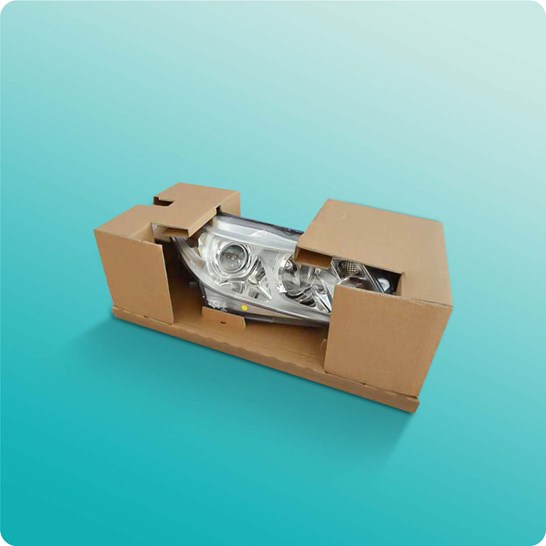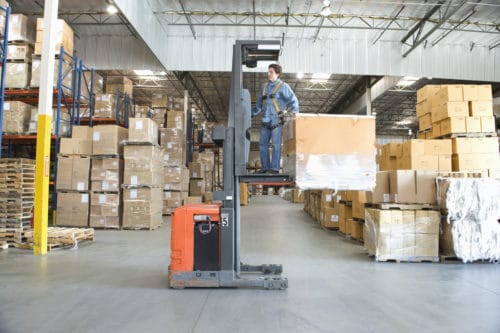Industrial Metal Packaging: Toughness and Durability in Every Layout
Industrial Metal Packaging: Toughness and Durability in Every Layout
Blog Article
Reliable Industrial Recycling Solutions for Sustainable Packaging: A Comprehensive Guide
That's where this detailed overview on reliable industrial recycling solutions for sustainable product packaging comes in. By discovering vital areas such as product packaging material option, designing for recyclability, carrying out reusing facilities, working together with reusing partners, and tracking and determining reusing success, this guide will outfit you with the understanding and tools necessary to make enlightened choices and drive positive modification within your company. Whether you're a packaging professional, sustainability supervisor, or simply interested in the subject, this overview will give valuable understandings and approaches to aid you navigate the world of sustainable packaging.
Product Packaging Material Selection
The choice of product packaging materials plays a vital function in guaranteeing the sustainability of commercial recycling services. The option of materials is key in minimizing environmental impact and making the most of reusing effectiveness when it comes to lasting product packaging. Selecting the appropriate materials can help in reducing waste generation, conserve resources, and advertise a circular economy.
Materials like cardboard, paper, glass, and specific kinds of plastics can be recycled several times without shedding their quality. On the various other hand, materials that are challenging to reuse, such as mixed plastics or non-recyclable compounds, can develop challenges for the recycling procedure and might end up in land fills or burners.
Another factor to consider is using sustainable and biodegradable products. Packaging made from renewable energies, such as plant-based plastics or biopolymers, can help in reducing dependency on nonrenewable fuel sources and reduce environment modification. Furthermore, biodegradable products break down normally over time, minimizing the buildup of waste in landfills.
Additionally, the weight and volume of packaging materials should be minimized to reduce transportation expenses and energy consumption. Light-weight products not only require fewer resources throughout manufacturing yet also contribute to lower carbon discharges throughout transport.
Designing for Recyclability
In order to make sure the recyclability of packaging materials, thoughtful style is crucial. Designing for recyclability involves creating packaging that can be easily sorted, separated, and processed in recycling centers. One vital element of making for recyclability is the choice of materials. Product packaging designers need to prioritize the use of products that are widely accepted for recycling and have actually developed recycling facilities. Products such as glass, light weight aluminum, and certain kinds of plastic, like pet dog and HDPE, are commonly reused and need to be liked over products that are challenging or pricey to recycle.
An additional important factor to consider in designing for recyclability is the removal of unneeded parts or products. By minimizing the number of layers, finishes, and extra elements, packaging can be made simpler and simpler to recycle. In addition, developers ought to aim to reduce the use of blended products, as they can make complex the recycling process.

Implementing Recycling Infrastructure
Effective implementation of reusing infrastructure is essential for the success of industrial recycling solutions. Without proper facilities in area, the reusing process ends up being inefficient and inefficient, hindering the total goal of lasting product packaging.
To execute recycling facilities successfully, numerous crucial factors require to be thought about. To start with, there should be an efficient collection system that helps with the separation and collection of recyclable materials. This can consist of assigned reusing containers in public areas, in addition to partnerships with waste management firms for curbside pick-up and sorting.
As soon as collected, the recyclable products require to be moved to reusing centers in a prompt way. This requires effective logistics and transport networks, making sure that the materials reach the proper centers right away.
At the reusing centers, progressed sorting and processing modern technologies should remain in area to separate different kinds of materials effectively. This includes using automated arranging devices, optical scanners, and hands-on sorting techniques.
Moreover, More hints there need to be a robust market demand for recycled materials. This can be achieved through collaborations with manufacturers and markets that use recycled materials in their manufacturing procedures. Creating a stable market for recycled products incentivizes the recycling market and advertises the round economy.
Working Together With Recycling Partners

One trick facet of working together with reusing partners is the facility of clear interaction networks. It is important to develop open lines of interaction to help with the exchange of details, updates, and comments. This allows both celebrations to stay notified regarding the progression of reusing initiatives and attend to any difficulties or concerns that may develop.
In addition, cooperation can include joint initiatives in making and executing reusing programs. Recycling companions can supply important insights and advice in developing effective collection systems and establishing the most appropriate recycling technologies. By interacting, services and reusing companions can optimize the reusing process and minimize waste.
Additionally, cooperation can expand past the operational elements of reusing. It can likewise encompass campaigning for and education initiatives. By signing up with forces, services and recycling partners can increase awareness regarding the importance of recycling and promote the adoption of sustainable packaging techniques among consumers and various other stakeholders.
Monitoring and Measuring Recycling Success
To make certain the effectiveness of commercial reusing solutions and the achievement of lasting packaging goals, it is important for businesses and their recycling companions to develop a detailed system for tracking and gauging reusing success (processing company). Determining and tracking recycling success enables go right here services to evaluate the influence of their reusing initiatives, determine areas for enhancement, and established significant targets for future development
One way to track reusing success is through the usage of data collection and analysis tools. By accumulating data on the amount of product packaging waste produced, the percentage of waste that is recycled, and the kinds of materials being reused, organizations can gain important insights into their recycling performance. This information can after that be evaluated to determine fads, patterns, and locations of ineffectiveness.
An additional crucial element of tracking and determining reusing success is developing clear and standard metrics. This allows businesses to compare their performance versus industry standards and track their progression with time. Metrics such as reusing prices, waste diversion prices, and greenhouse gas exhausts can give a measurable step of a business's reusing success.

Verdict
Finally, implementing reliable commercial recycling options for lasting product packaging calls for cautious consideration of packaging product choice, designing for recyclability, executing recycling facilities, collaborating with reusing partners, and monitoring and determining recycling success. By incorporating these methods, companies can add to a much more sustainable and environmentally-friendly strategy to product packaging, decreasing waste and promoting the round economic climate.
By exploring vital locations such as packaging material selection, creating for recyclability, executing reusing infrastructure, collaborating with reusing partners, and tracking and gauging reusing success, this guide will certainly furnish you with the knowledge and devices necessary to make educated choices and drive favorable adjustment within your organization. Product packaging designers ought to prioritize the use of products that are commonly accepted for recycling and their website have established recycling infrastructures.Cooperation with reusing partners is necessary for the effective implementation of industrial recycling remedies and the achievement of sustainable packaging objectives. By signing up with forces, services and recycling partners can increase awareness concerning the significance of recycling and advertise the fostering of lasting product packaging techniques among consumers and various other stakeholders.
By accumulating information on the amount of packaging waste generated, the portion of waste that is reused, and the kinds of materials being reused, organizations can obtain useful insights right into their recycling performance.
Report this page